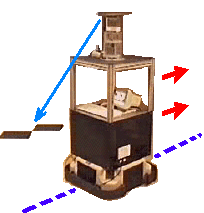

Visual Path Following is a method whereby once a robot has arrived at the start of a previously specified path, it can perform path following to a given location relying on visual tracking of features (landmarks). The catadioptric omnidirectional camera placed on top of the robot is the sole sensor used in the next experiments.
The next image shows the result of a Visual Path Following experiment. In this case the path describes the desired trajectory for docking the platform ( dotted line = reference path, dash-dotted line = landmark, solid line = performed path ).
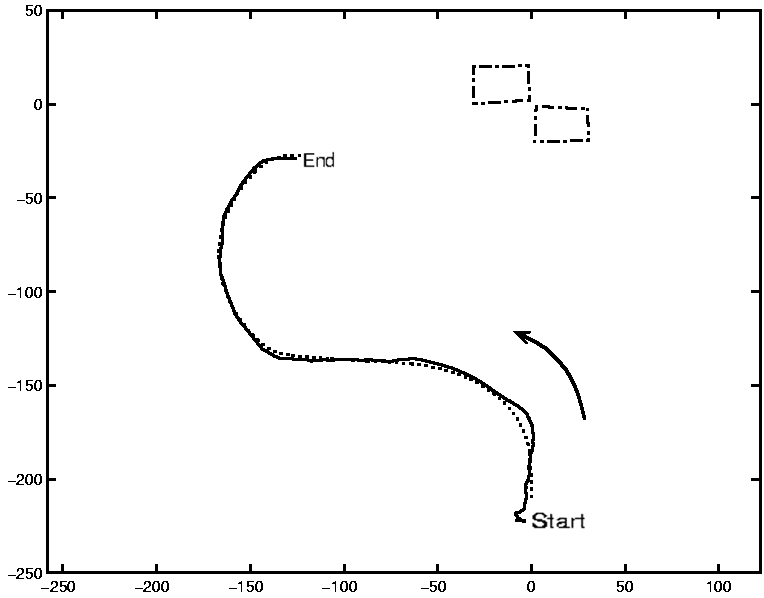
As shown in the images below, we can see labmate at the start and at the end, respectively, of the path visually followed. Notice that the landmark is constituted only by the two black rectangles close to the bottom-right corner. The white strip is used after experiment conclusion for qualitative evaluation of the results.
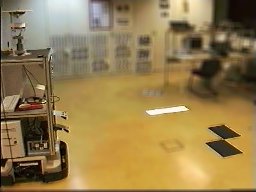
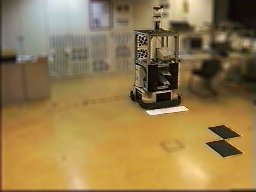
![]() See in
this video (mpeg 2.3Mb)
the complete movement performed by the mobile platform.
See in
this video (mpeg 2.3Mb)
the complete movement performed by the mobile platform.
The next image shows another example of Visual Path Following. It is a door crossing experiment composed by two path segments based on two landmarks. The first path segment conduces the platform close to the door and the second is actually the door traversal.
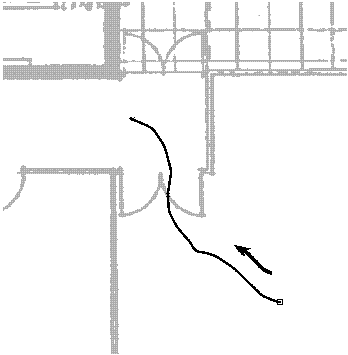
The following images show the start and end positions of the described Visual Path Following experiment. Notice the usage of two landmarks (two pairs of black rectangles).
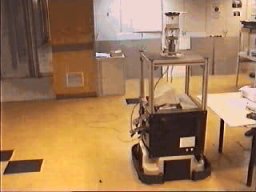
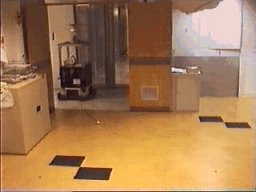
![]() See the
video (mpeg 4.3Mb)
that shows the outside view of the complete experiment, and see also
what the robot "sees" while crossing the door, in a
PowerPoint presentation containing videos (present.+videos zip: 11.6Mb)
.
See the
video (mpeg 4.3Mb)
that shows the outside view of the complete experiment, and see also
what the robot "sees" while crossing the door, in a
PowerPoint presentation containing videos (present.+videos zip: 11.6Mb)
.
Link to the page with a detailed view of the Omnidirectional Vision sensor .


Institute for Systems and Robotics , Computer and Robot Vision Lab
Last update Jul02: J. Gaspar,
e-mail: jag@isr.ist.utl.pt
,
www: http://www.isr.ist.utl.pt/~jag